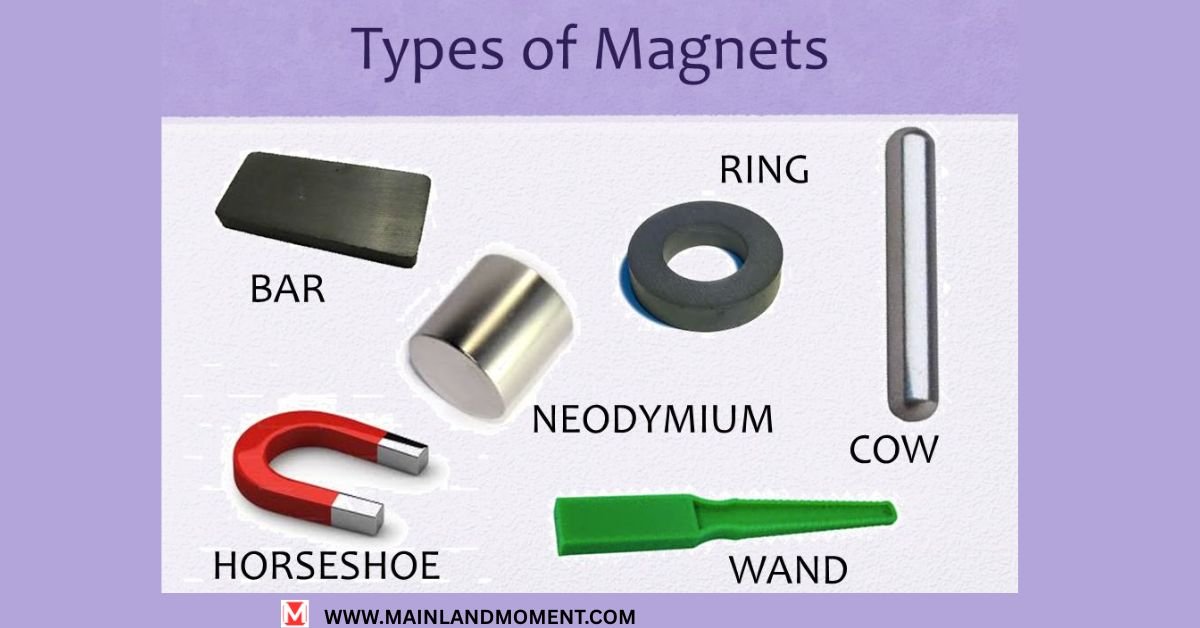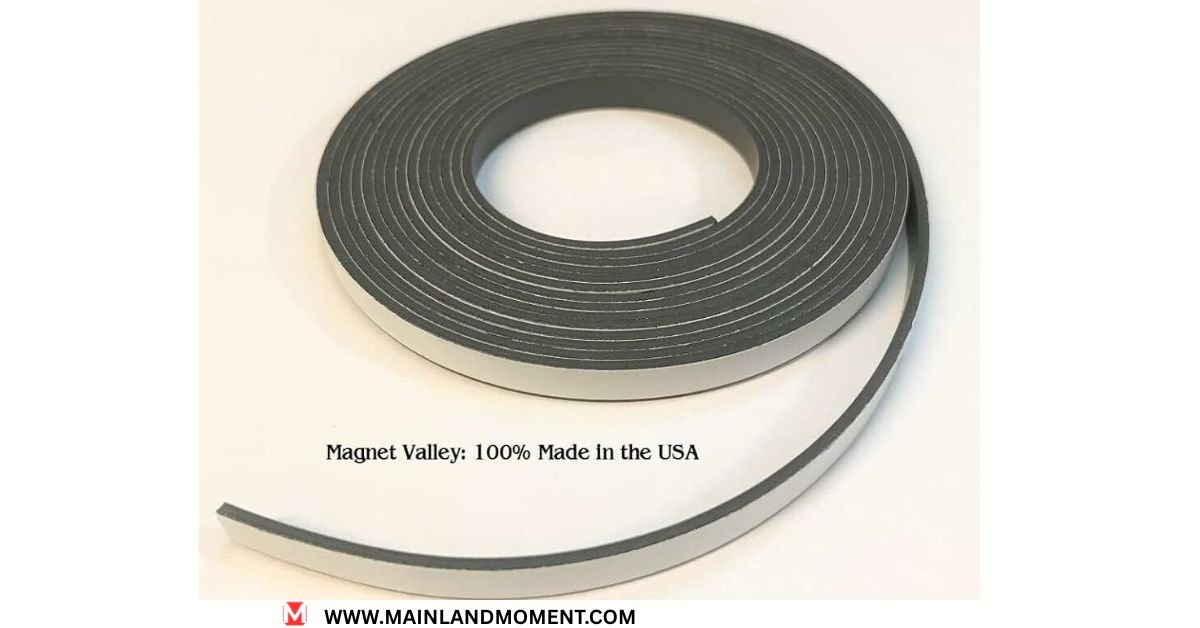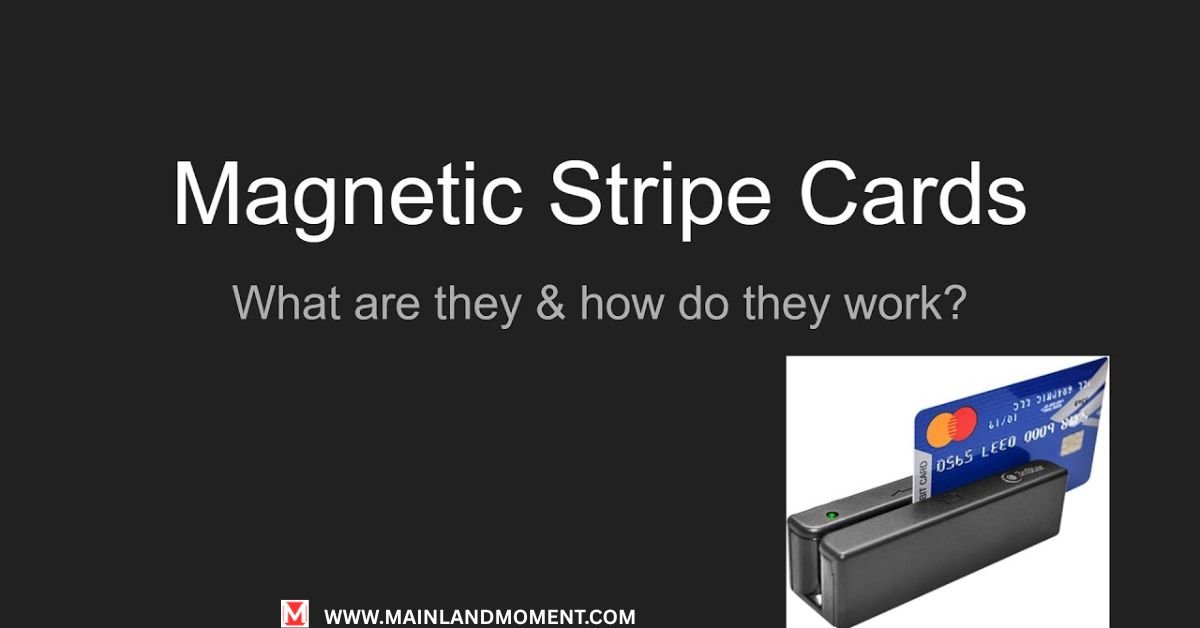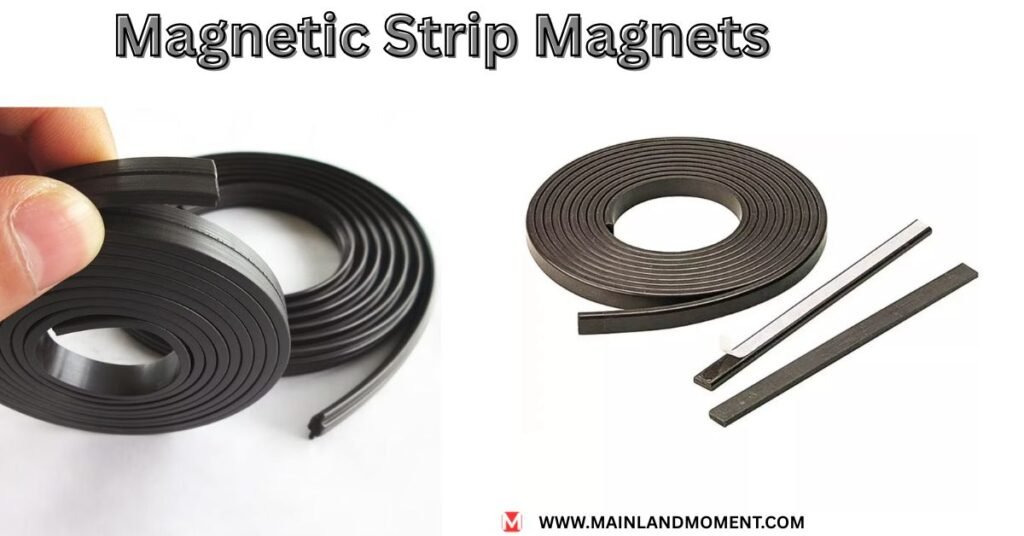Magnetic strip magnets might sound like a small thing, but they pack a big punch. These flexible magnetic strips stick, hold, and organize like nobody’s business. From tidying up your kitchen to powering warehouse operations, they’re everywhere once you start looking. Curious about what makes them tick?
Let’s dive into the world of magnetic strip magnets and uncover why they’re a must-have for your home, office, or workshop.
Why These Flexible Powerhouses Deserve Your Attention
Ever grabbed a magnetic tape roll to hang a photo or label a shelf? That’s the magic of magnetic strip magnets at work. They’re not just for fridge doors though they’re great there too, thanks to fridge door magnetic strips.
These magnets blend strength with flexibility, making them perfect for countless tasks. Unlike rigid magnets, they bend, stick, and even let you cut them to size. Think of them as the Swiss Army knife of magnets versatile, reliable, and ready for action.
But what’s the big deal? For starters, magnetic strip magnets save time and space. They’re easy to use, reusable, and won’t damage surfaces. Whether you’re a DIY enthusiast crafting with magnetic strips for crafts or a business owner streamlining operations, these magnets deliver. Let’s break down how they work and why they’re so darn useful.
A Quick Dive Into How They Work
At their core, magnetic strip magnets are all about magnetism made flexible. They’re made from a mix of magnetic powder and a bendy material like rubber or plastic. This combo creates a rubber magnetic strip that holds strong but moves with you. Picture a magnet that can twist, roll, or stick to curved surfaces that’s the beauty here. They’re magnetized in a way that gives them a reliable pull, perfect for lightweight tasks like holding notes or tools.

The secret sauce? It’s in the manufacturing. Tiny magnetic particles get aligned during production to create a consistent magnetic field. That’s why a magnetic strip roll can grip metal surfaces without losing its mojo. And because they’re so adaptable, you can find them in everything from self-adhesive magnets to printable magnetic strips for custom projects.
The Science Behind Magnetic Strip Magnets
What They’re Made Of: Breaking Down the Materials?
So, what’s inside a flexible magnetic strip? Most start with ferrite powder, a magnetic material that’s both affordable and effective. This powder gets mixed with a flexible binder usually rubber or vinyl to create a pliable strip. Some high-end versions use rare-earth elements for extra strength, but ferrite does the job for most multipurpose magnetic strips. The result? A magnet that’s tough enough to hold steady but soft enough to cut with scissors.
Fun fact: The thickness of a magnetic tape roll matters. Standard strips range from 0.5mm to 2mm thick, with thicker ones packing more magnetic punch. For example, a 1mm-thick adhesive magnetic strip can hold about 50g per square centimeter on a steel surface. That’s enough for photos, notes, or even small tools.
How Flexibility Meets Magnetism: The Physics Unveiled
Ever wondered what is a magnetic strip magnet on a physics level? It’s all about magnetic domains tiny regions in the material that act like mini-magnets. During production, these domains get aligned to create a uniform magnetic field. Unlike neodymium magnets, which are rigid and super strong, magnetic strip magnets trade some power for flexibility. Their field is weaker but spreads evenly across the strip, making them ideal for long, continuous holds.
Here’s a quick comparison:

This balance makes magnetic strips vs neodymium magnets a classic case of picking the right tool for the job.
Strength vs. Versatility: What Sets Them Apart
Are magnetic strip magnets strong? Strong enough for most everyday tasks, but they won’t lift a car. Their real superpower is versatility. A strong magnetic tape can hold up to 100 grams per square centimeter, perfect for papers, photos, or lightweight tools. But unlike bulky magnets, you can roll, cut, or stick them anywhere. Need a custom cut magnetic strip for a weirdly shaped shelf? No problem just grab some scissors.
Case Study: A small craft shop in Ohio used magnetic labeling strips to organize their inventory. By sticking adhesive magnetic strips to plastic bins, they cut sorting time by 30%. The strips held firm but peeled off cleanly when they rearranged. That’s the kind of practical power we’re talking about.
Everyday Magic: Where Magnetic Strip Magnets Shine
Transforming Your Home: Clever Storage Solutions
Uses of magnetic strip magnets at home are endless. In the kitchen, a fridge door magnetic strip can hold recipes or grocery lists. In the garage, stick a magnetic strip roll to a workbench to keep screws and bits in place. Got kids? Use safe magnets for crafts and kids to create fridge art galleries. These magnets make organizing feel like a game, not a chore.
Here’s a quick list of home hacks:
- Knife holder: Stick a peel and stick magnet under a cabinet for easy knife access.
- Spice rack: Attach self-adhesive magnets to jars for a floating spice display.
- Photo wall: Use magnetic strips for crafts to swap out family pics without tape.
Powering Businesses: Warehouses, Retail, and Beyond
In the business world, magnetic strip magnets are unsung heroes. Warehouses use magnetic labeling strips to tag shelves, making inventory a breeze. Retail stores stick adhesive magnetic strips to signs for quick swaps during sales. Even gyms use them to hold schedules on metal lockers. Their ability to stick, move, and stick again saves time and money.
“We switched to multipurpose magnetic strips for our warehouse labels, and it’s been a game-changer. No more peeling stickers!” Sarah T., Logistics Manager
Learning Made Fun: Classroom and Office Applications
Magnetic strip magnets for office use are a teacher’s and manager’s best friend. In classrooms, printable magnetic strips turn whiteboards into interactive learning hubs. Stick vocab words or math problems on a magnetic tape roll, and kids can move them around. In offices, use magnetic strips with adhesive backing to label filing cabinets or track projects. They’re cheap, reusable, and make work feel less like, well, work.
Example: A third-grade teacher used colored magnetic strips to create a behavior chart. Kids moved their names up or down based on actions, and the visual cue worked wonders. Engagement shot up, and parents loved the system.
Why Magnetic Strip Magnets Are a Game-Changer
Stick It and Forget It: Hassle-Free Setup
How to use magnetic strip magnets? It’s as easy as peel, stick, done. Most come as peel and stick magnets with adhesive backing that grips wood, plastic, or drywall. No tools, no Mess. Needs to move it? They pull off without leaving sticky gunk. This makes them perfect for renters or anyone who hates commitment.
Fact: A 0.5mm-thick adhesive magnetic strip can stick to surfaces for years without losing grip, as long as it’s clean and dry when applied.
Move It, Reuse It: No Mess, No Fuss
Unlike tape or glue, magnetic strip magnets are reusable champs. Peel them off, stick them somewhere else, and they’re good as new. This makes magnetic strips for crafts a favorite for temporary projects like holiday decorations. Plus, they won’t tear paint or leave marks, so your walls stay pristine.
Light as a Feather, Tough as Nails
Weighing next to nothing, rubber magnetic strips are easy to handle but don’t let that fool you. They’re durable enough to withstand heat, cold, and even outdoor use if sealed properly. A strong magnetic tape can hold steady at temperatures from -20°F to 120°F, making them tough cookies for any environment.
Exploring Your Options: Types of Magnetic Strip Magnets

Peel-and-Stick: The Adhesive Advantage
Adhesive magnetic strips are the go-to for most projects. One side’s magnetic, the other’s sticky, so they bond to almost anything wood, glass, you name it. They come in widths from 0.5 inches to 2 inches, with 3M adhesive being a top choice for extra hold. Perfect for magnetic strips with adhesive backing that need to stay put.
Plain or Playful: Colors and Finishes Compared
Want to jazz things up? Colored magnetic strips come in red, blue, green, and more, adding flair to crafts or labels. Printable magnetic strips let you add text or designs with an inkjet printer. Plain ones, usually black or brown, blend into industrial settings. Choose based on vibe bright for kids’ projects, subtle for offices.

Single vs. Dual Magnetism: Picking the Right Pull
Most magnetic strip magnets are single-sided, meaning one side sticks to metal, and the other’s either adhesive or plain. Double-sided versions have magnetism on both sides, great for connecting two metal objects. Single-sided is more common for magnetic tape rolls, while double-sided shines in niche uses like magnetic closures.
Your Guide to Choosing the Perfect Magnetic Strip Magnet

Size, Strength, and Surface: Key Questions to Ask
Picking the best magnetic strip magnets for DIY starts with three questions:
- What’s the surface? Metal needs no adhesive; wood or plastic needs self-adhesive magnets.
- How heavy is the load? A 1mm-thick strip holds about 50g/cm²; go thicker for heavier items.
- What’s the size? Measure your space—strips come in 0.5-inch to 4-inch widths.
Pro tip: For outdoor use, check for UV-resistant or waterproof options to avoid fading or peeling.
Top Picks: Trusted Brands and Shopping Spots
Some brands stand out for quality:
Local hardware stores like Ace Hardware or Lowe’s also stock magnetic strip rolls for quick buys.
Avoiding Pitfalls: What to Watch Out For
Don’t get stuck with duds. Cheap magnetic strips might have weak adhesive or lose magnetism over time. Check reviews for 3M adhesive or high-pull strength. Also, avoid using magnetic strips near sensitive electronics more on that later. Always test a small piece before committing to a big project.
Level Up: Smart Ways to Use Magnetic Strip Magnets
Ready to get creative? Here are some best magnetic strip magnets for DIY ideas:
- Tool organizer: Stick a magnetic strip roll inside a toolbox to hold bits and blades.
- Cable tamer: Wrap peel and stick magnets around cords to keep them tidy.
- Magnetic bookmarks: Cut magnetic strips for crafts into thin strips for reusable bookmarks.
Case Study: A blogger used printable magnetic strips to create custom chore charts. She printed tasks on the strips, stuck them to a metal board, and let her kids move them as they completed chores. The system cost under $15 and cut nagging by half.
Keep Them Strong: Care Tips for Longevity
To make your magnetic strip magnets last:
- Clean surfaces: Dust or grease weakens adhesive. Wipe with alcohol first.
- Store flat: Rolling tightly can weaken magnetism over time.
- Avoid heat spikes: Temps above 120°F can demagnetize some strips.
Fact: A well-maintained rubber magnetic strip can hold its strength for 5-10 years under normal conditions.
Mixing and Matching: Pairing with Other Tools
Magnetic strip magnets play well with others. Pair them with dry-erase boards for interactive displays or metal clips for heavy-duty holds. In crafts, combine colored magnetic strips with washi tape for extra pizzazz. The key? Experiment to find what clicks for your project.
Answering Your Burning Questions About Magnetic Strip Magnets
Will They Mess With My Gadgets?
Worried about are magnetic strip magnets strong enough to harm electronics? Relax—most magnetic strip magnets are too weak to damage phones, laptops, or credit cards. Their field is small, typically under 100 gauss at the surface. For context, a fridge magnet is about 50 gauss, while a hard drive needs thousands to get wiped. Still, keep them away from pacemakers or super-sensitive devices, just to be safe.

Snip, Snip: Cutting Them Down to Size
Can magnetic strips be cut? You bet! Most magnetic tape rolls cut easily with scissors or a utility knife. Just measure, mark, and snip for custom cut magnetic strips. Cutting doesn’t weaken the magnetism, but clean the edges for a neat look. Pro tip: Use a ruler for straight lines, especially for magnetic labeling strips.
How Do They Stack Up Against Heavyweight Magnets?
Magnetic strips vs. Neodymium magnets is like comparing a sprinter to a weightlifter. Neodymium magnets are crazy strong think 1 kg/cm² but rigid and pricey. Magnetic strip magnets max out at 100 g/cm² but bend, stick, and cost less. For crafts, labels, or light holds, multipurpose magnetic strips win. For heavy machinery? Go neodymium.



Pingback: Liteon Technology Corporation On My WiFi: Unpacking The Tech Behind Your Connection
Pingback: Display Technologies Unveiled: Backlights, Pixels, And The Future Of Screens
Pingback: Amazon Flex App Not Working? Here’s How To Fix It Fast And Get Back To Delivering